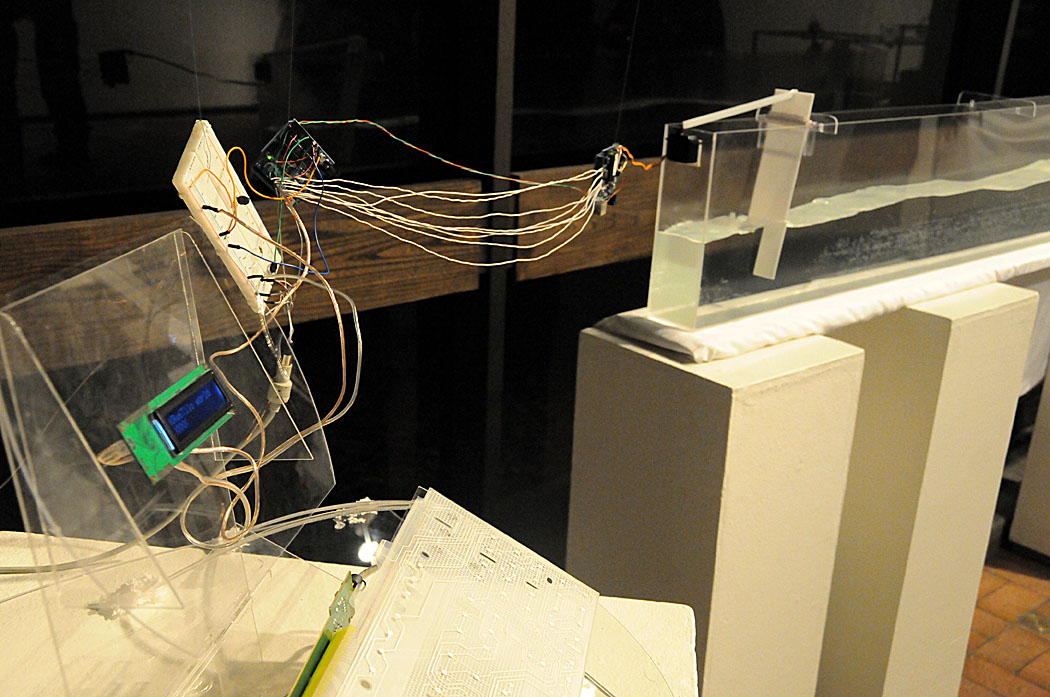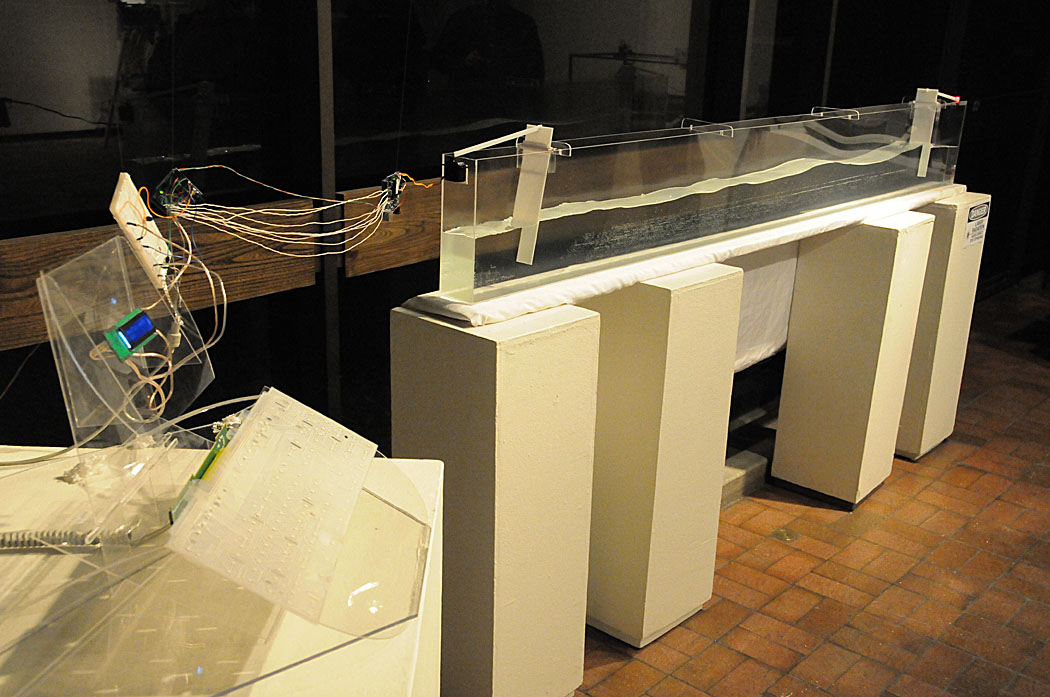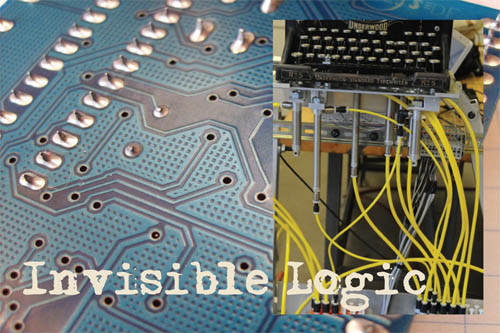
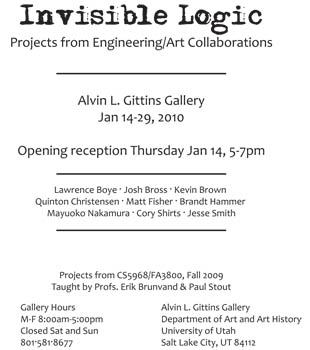
These projects are from the class Embedded Systems and Kinetic Art,
taught by Erik Brunvand (School of Computing) and
Paul Stout (Department of Art and Art History) in Fall semester 2009
Kinetic sculpture is art that contains moving parts or depends on motion, sound, or light for its effect. The kinetic aspect is often regulated using microcontrollers connected to motors, actuators, transducers, and sensors that enable the sculpture to move and react to its environment.
An embedded system is a special-purpose computer system (microcontroller) designed to perform one or a few dedicated functions, often reacting to environmental sensors. It is embedded into a complete device including hardware and mechanical parts rather than being a separate computer system.
Kinetic art using embedded control is a marriage of art and technology. Artistic sensibility is required for concept and planning, and engineering skill is required to realize the artistic vision. In this project-based class computer engineering students will work together with art students to build collaborative kinetic art pieces. Students will explore interfacing of embedded systems with sensors and acuators of all sorts, along with real-time/interactive programming techniques and interrupt driven system design. They will also explore physical and conceptual aspects of machine-making as a sculpture process.
This class is really two classes that meet together - one in the School of Computing and one in the Department of Art and Art History. Project teams will be required to include students from both disciplines. This ia a cross between an engineering class (embedded system design and programming) and an art studio class (designing and building the sculptures) with all students participating fully in both areas.
One of the main purposes of this joint class is to help students understand the fundamental notion of DESIGN, both in engineering and the arts. We all know good design when we see it, and appreciate things (both computer-related and art-related) that exhibit excellence in design. But how do good designers learn to be good designers? We hope that this course is one step along that journey.
From the Computer Science and Engineering (CSE) side we encourage students to apply their technical skills in a context that is explicitly non-technical. This can allow students thefreedom to try a wide range of approaches to a particular problem. In the process, engineers are exposed to a variety of aesthetic and creative concepts that would not normally be part of an engineering curriculum. Artists explore programming and engineering in a context that is more conducive to their learning style because it is directed at art-making. Both groups of students gain practical experience in design-thinking which is quite distinct from the computational thinking that is usually more associated with CSE.
These pictures are from the opening of the gallery show that showed off the class projects. The show, entitled Invisible Logic, ran from Jan 14-29, 2010 in the Gittins Gallery on the University of Utah campus.


Cars: These radio-controlled cars were modified to hold white-board markers. The are controlled from transmitters under the white-boards which are connected to Arduinos. The Arduinos are connected to RSS news feeds, and based on random characters from those news feeds, the cars steer and change direction. Thus, the drawings on the white board are, in a sense, a visualization of the information coming over the news feeds.
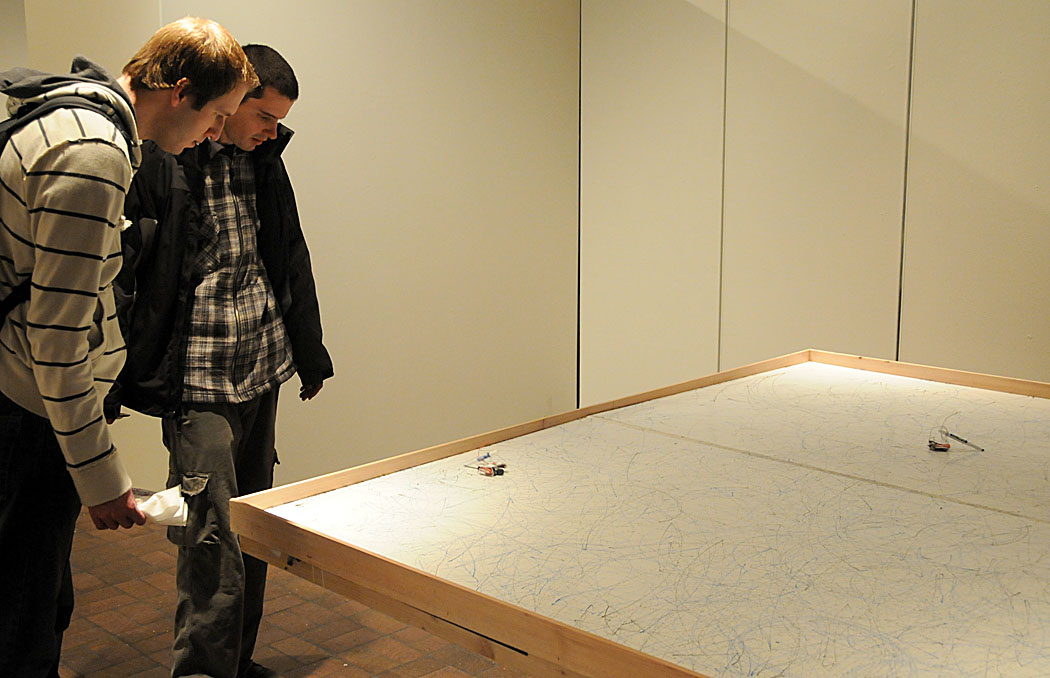
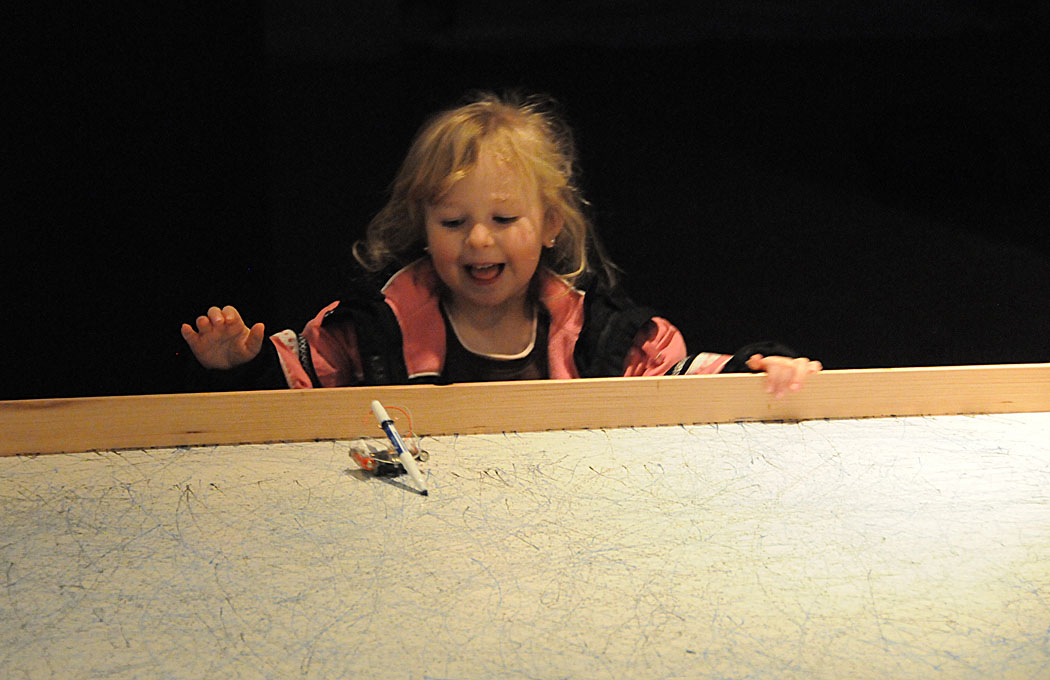
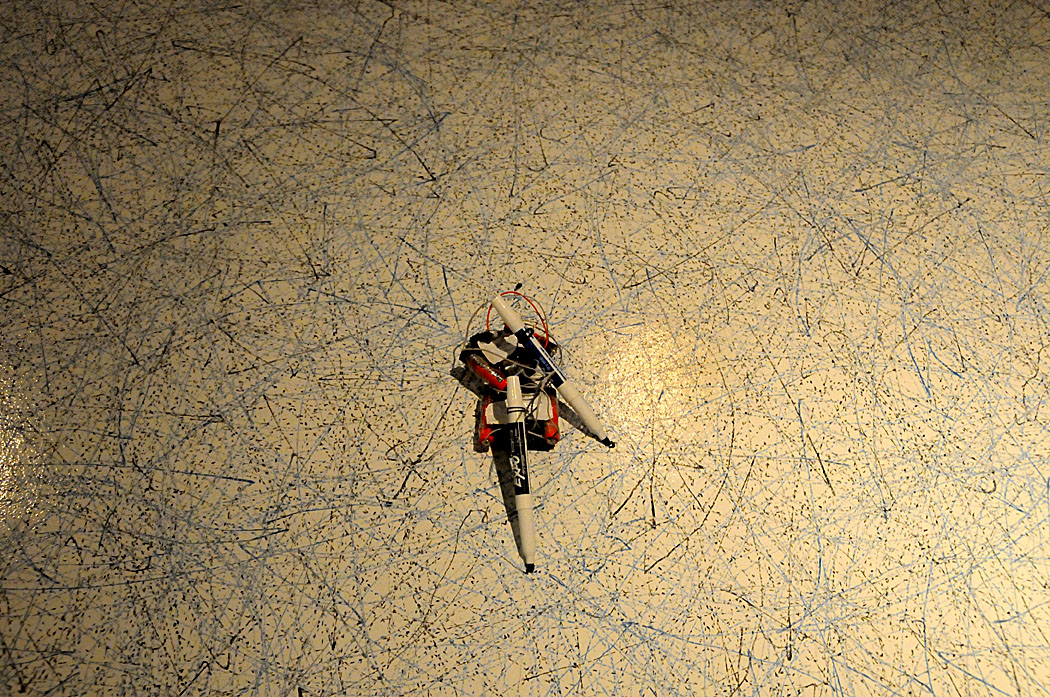
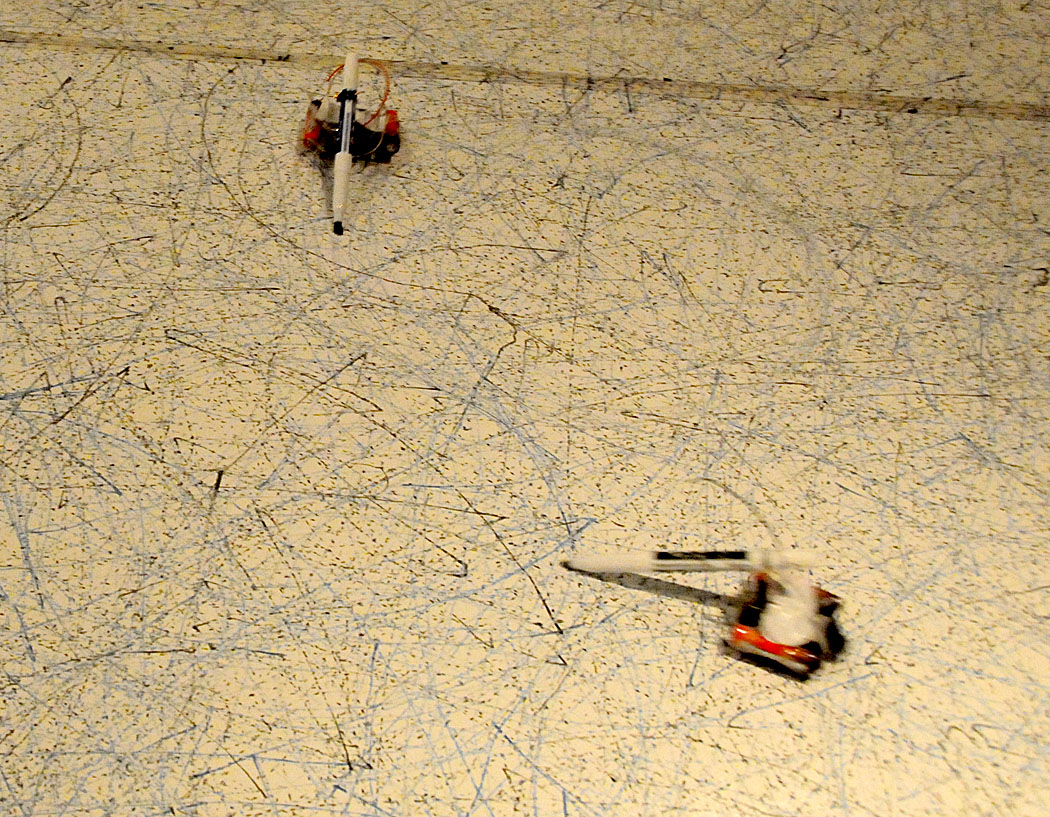
Windchime: In this windchime, the chimes are switches - when they make electrical contact with the center element, they cause different colors to fade in and out in the top of the chime. Thus, as the chimes make noise in the breeze, they also make a continuouly changing colorscape in the top of the windchime.
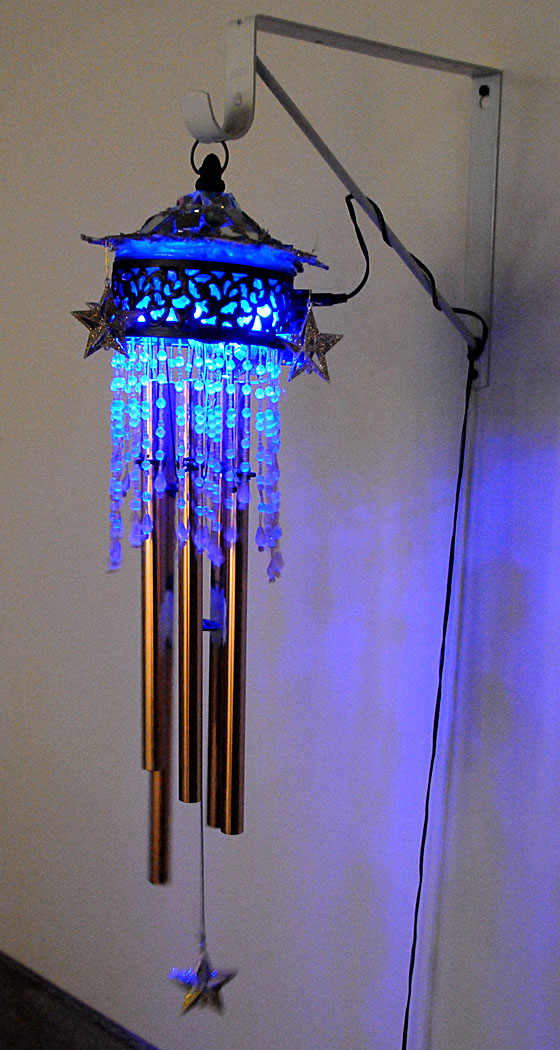
Angry Flowers: These flowers wave their petals in slow lazy patterns then left on their own. However, if you get too close, they will become agitated and move their petals in an increasingly frantic pattern until you leave them alone.
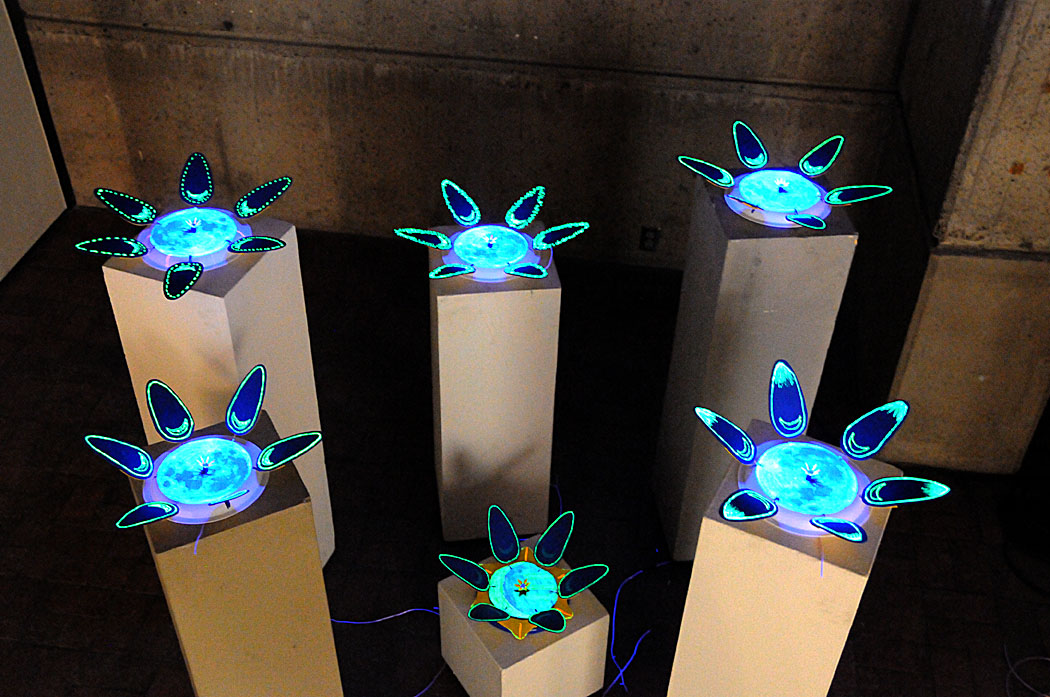
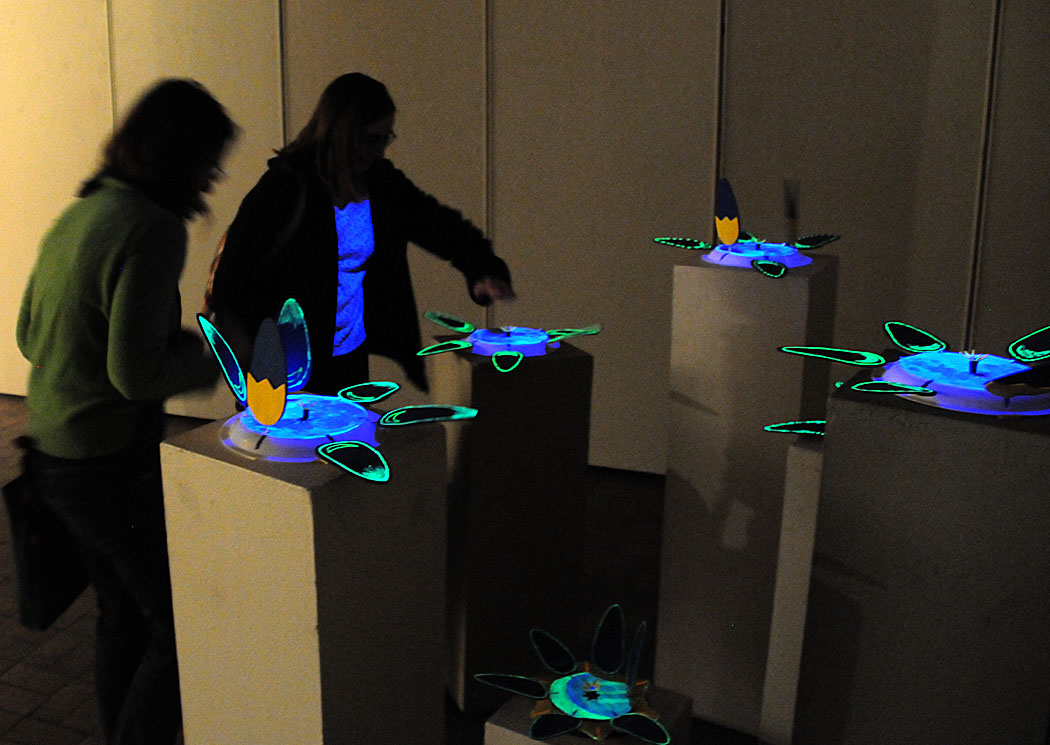
Relic: The Relic is a wooden object with a dim light in the center and two metal triangular pads with handprints on them inviting the viewer to touch the pads. When a viewer touches both pads, the light grows a little brighter, and internal gears (projected on the wall behind) rotate. If multiple people form a human chain between the pads, the light grows brighter still, and the gears rotate further. The maximum brighness is reached when 4-5 people are in a human chain between the metal elements.
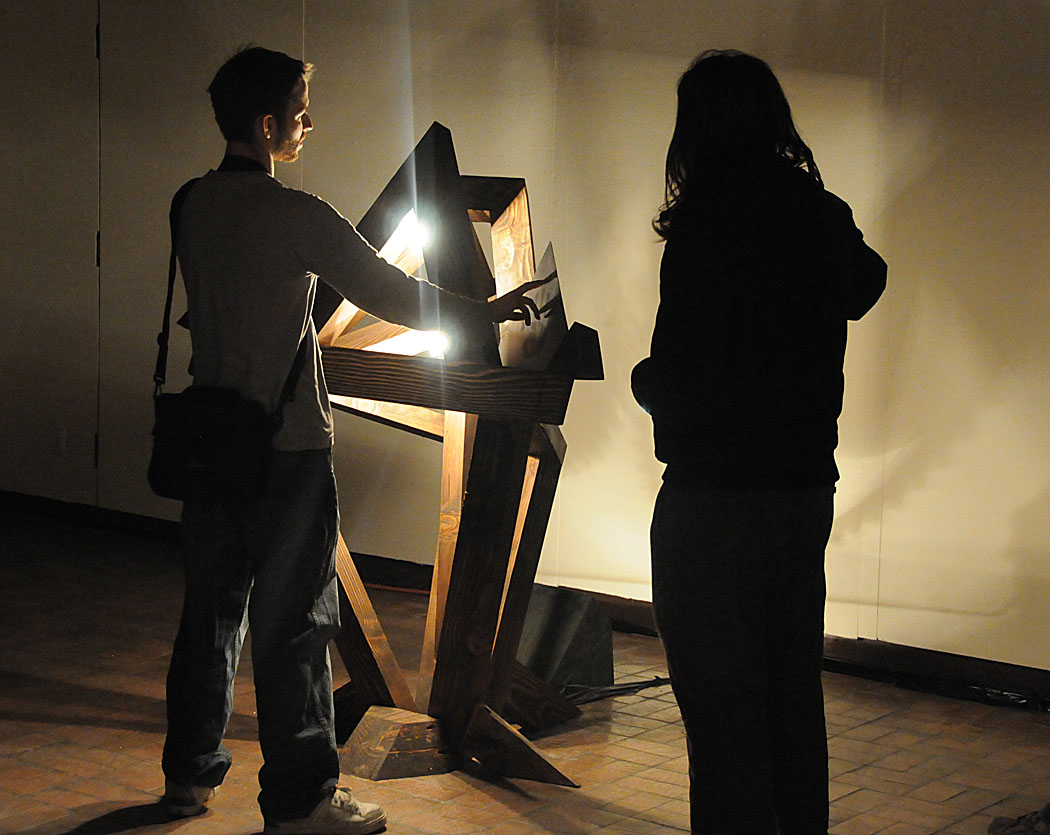
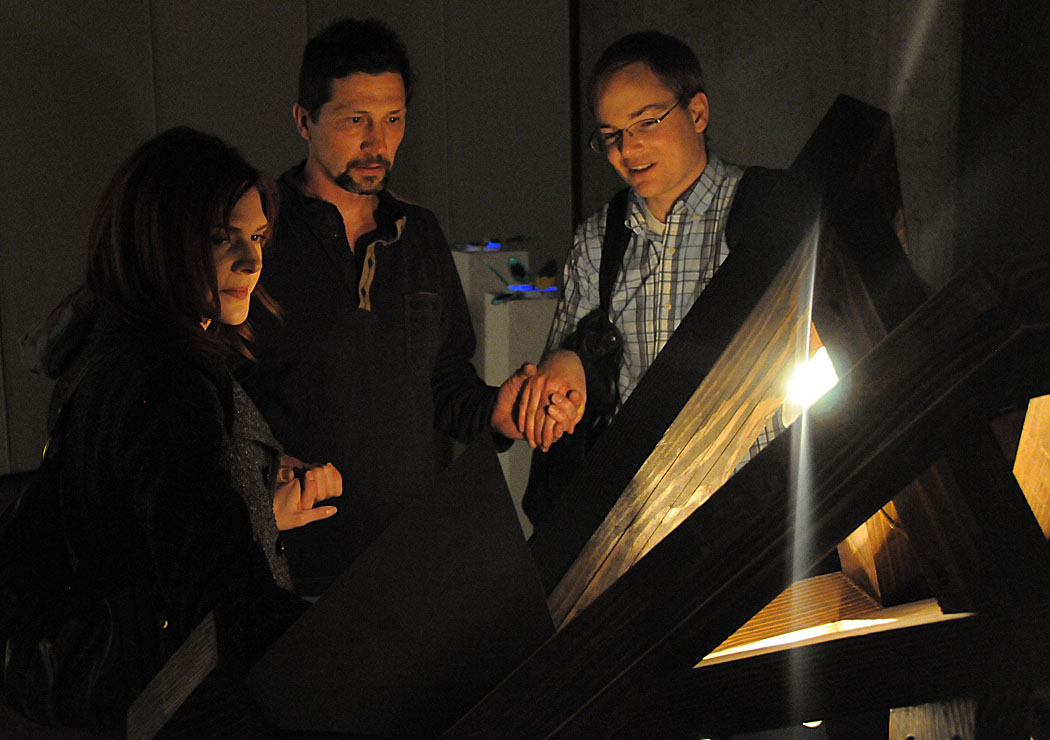
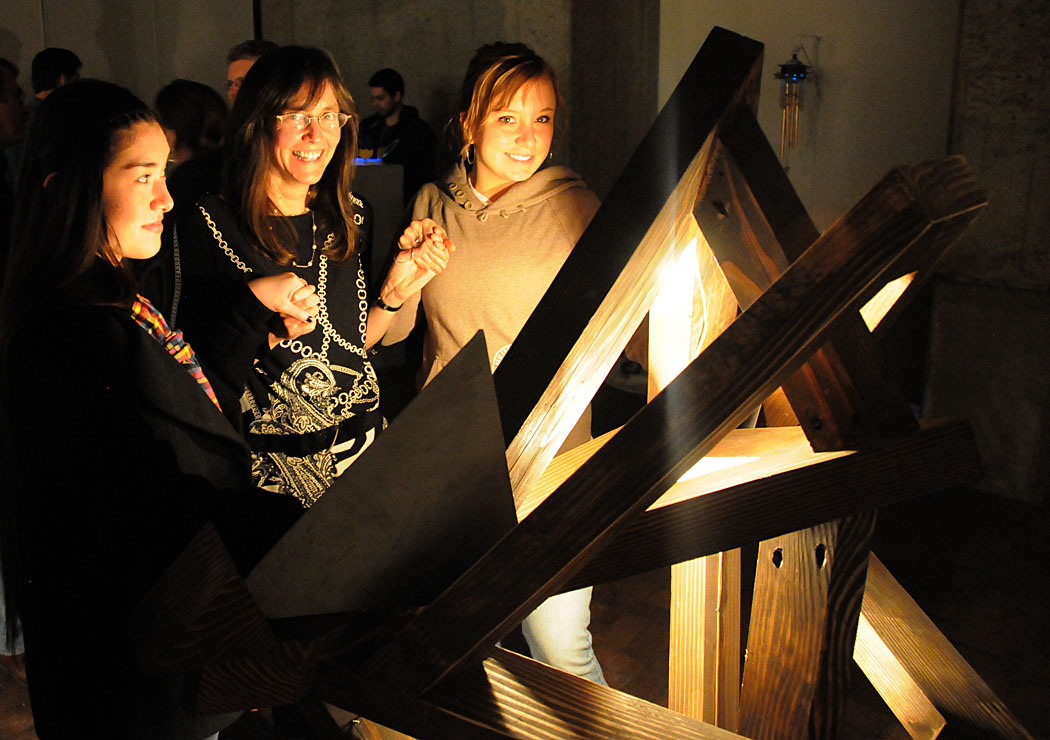
Curious Flower: This flower rotates to face the viewer.
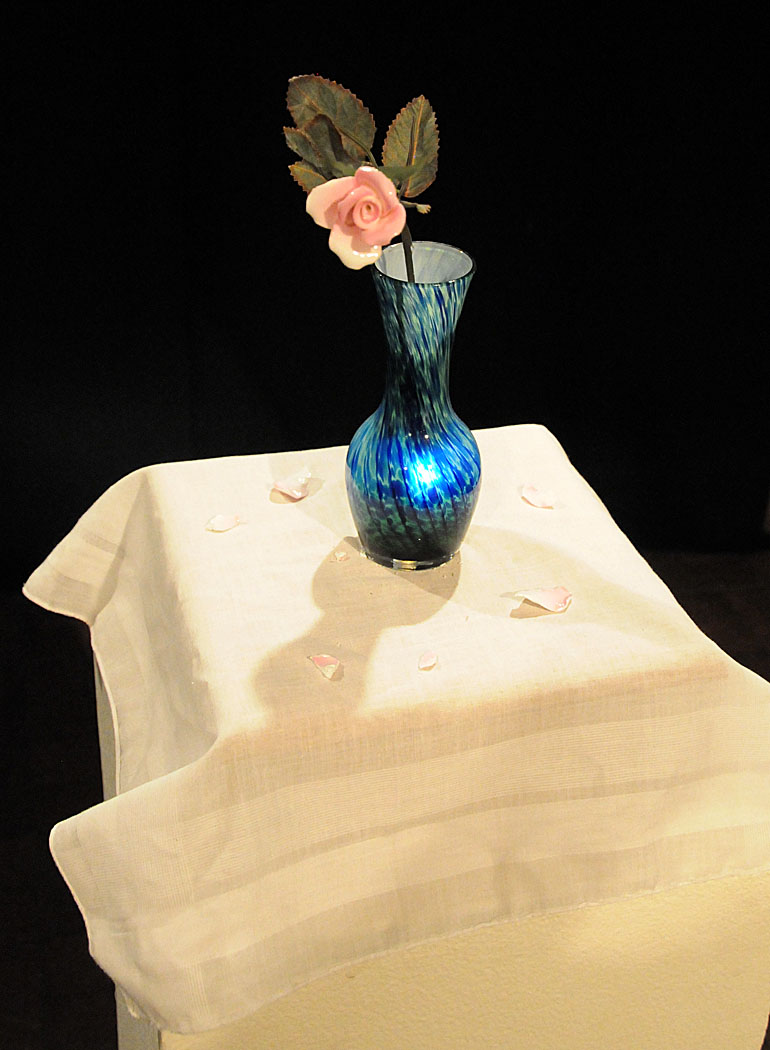
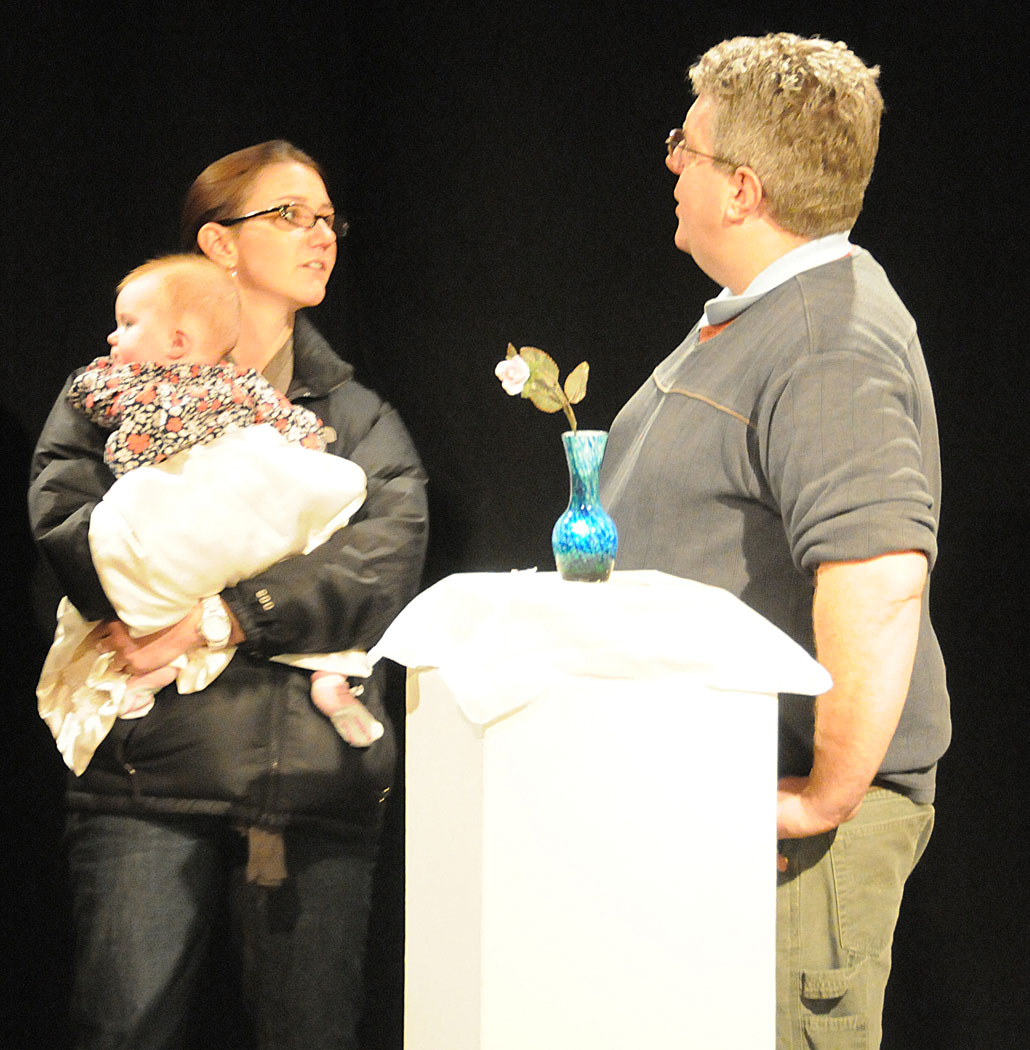
Triangle: The interior of the welded metal triangle is a stack of etched plexi triangles that make a 3d-like image. That interior shape is illuminated by slowly changing colors around the edges of the plexi.
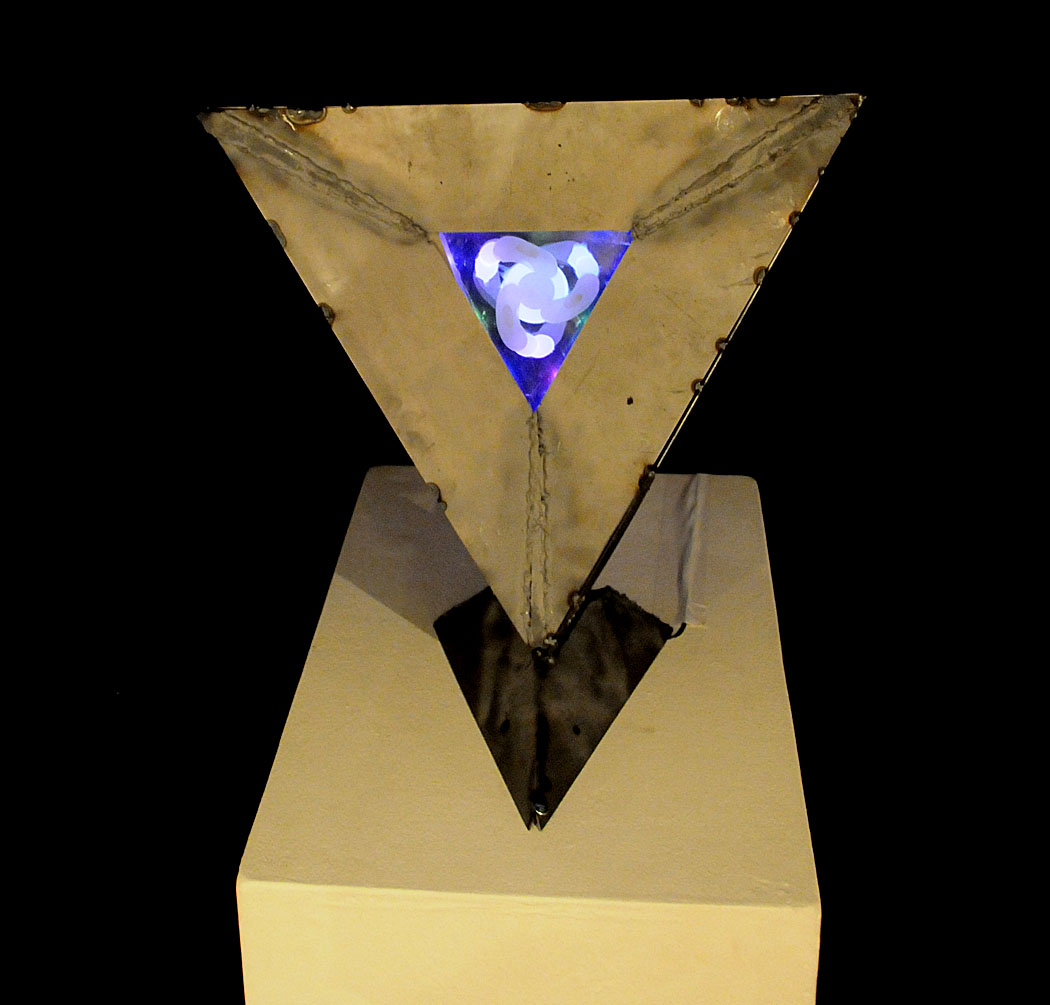
Underwood 1910: This classic typewriter has been fitted with pneumatic actuators on five keys, plus shift, space, and carriage return. The typewriter types autonomously under control of an Arduino.
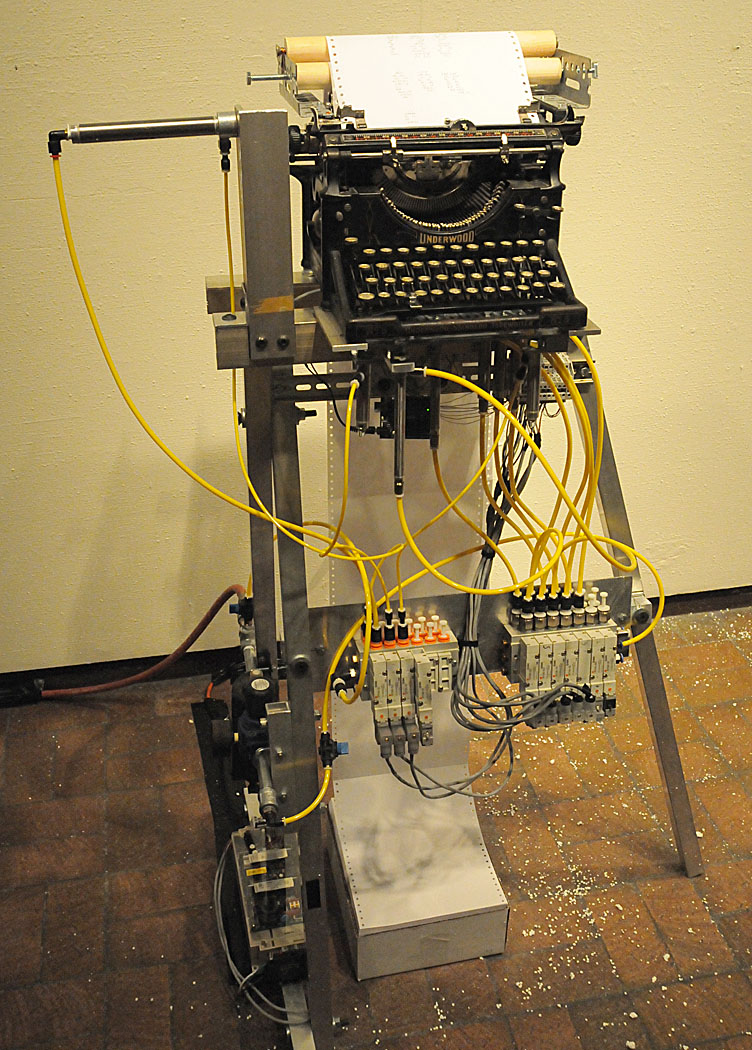
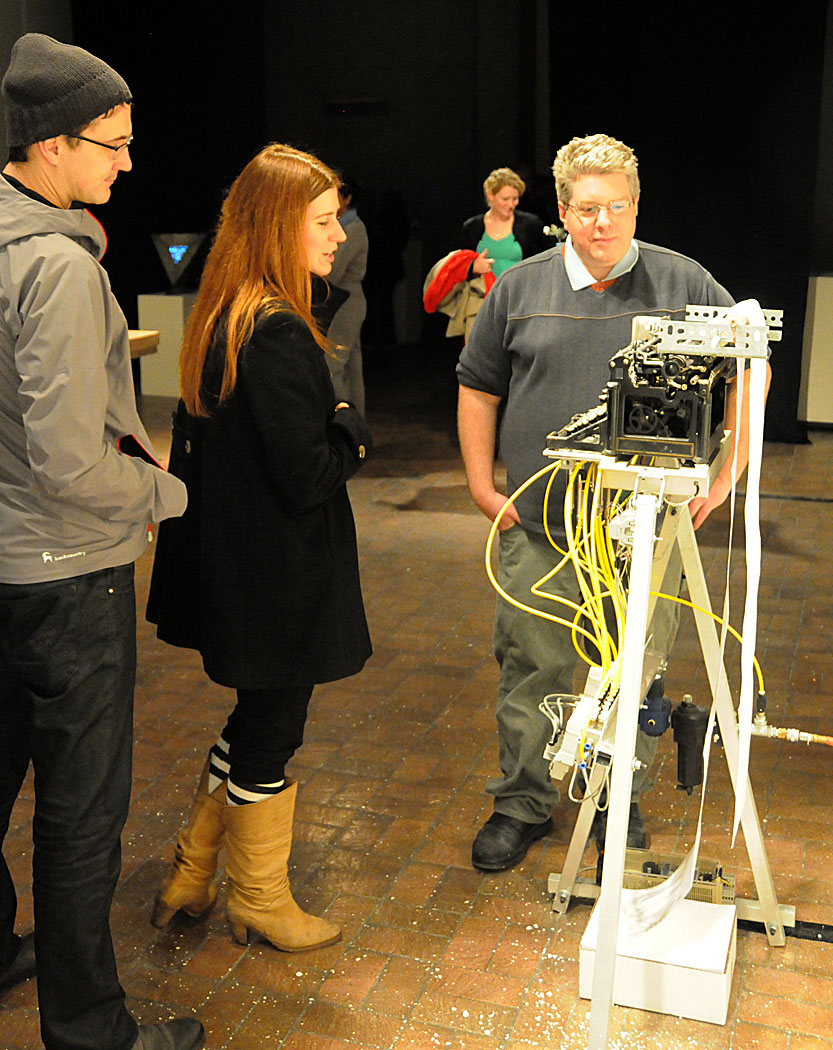
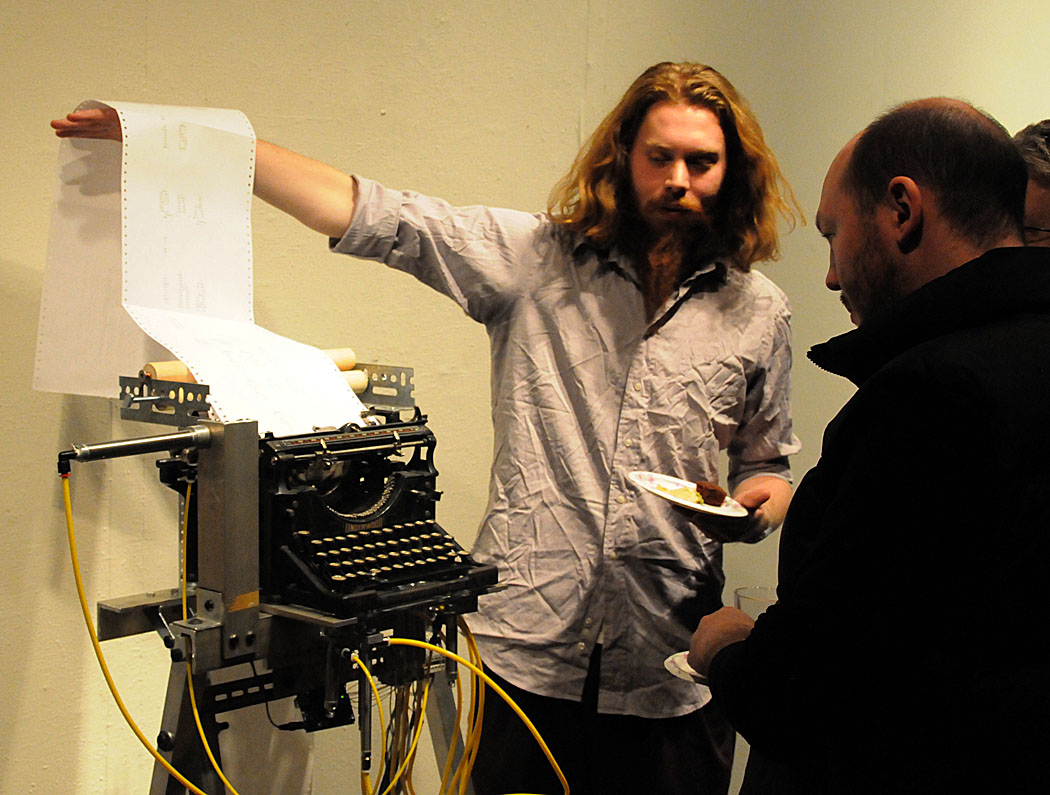
The Folly of War: In this piece a synthesized voice intones a statement about war from a variety of sources. Then the cannon flashes and one set of soldiers "dies" by fallin over. After all four groups of soldiers have fallen, they are "reborn" and the cycle starts over again.
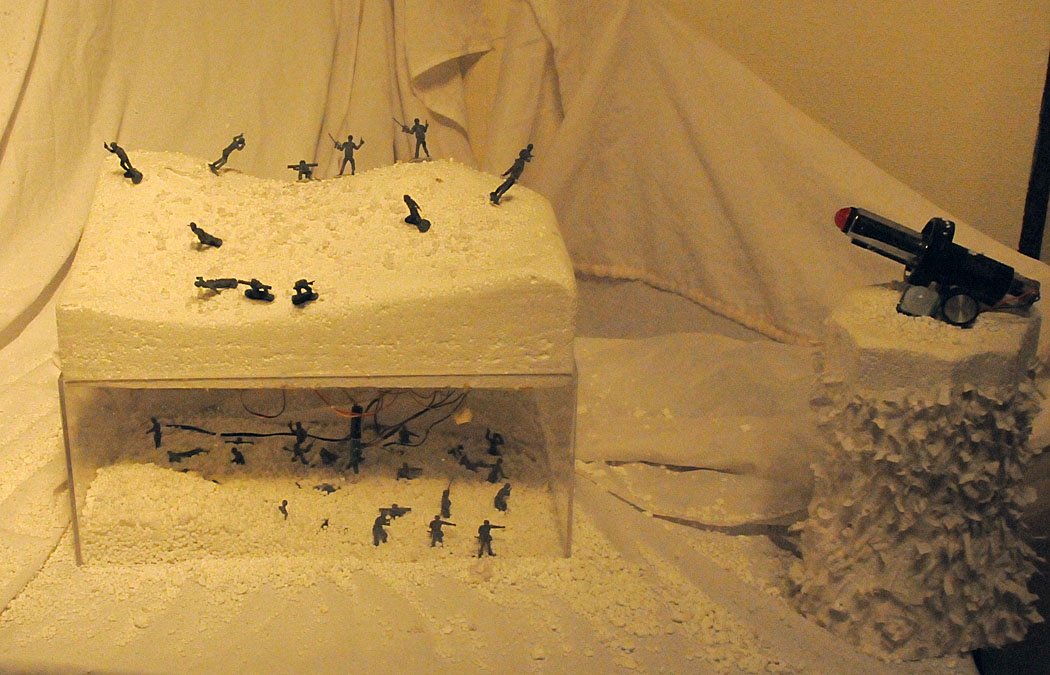
Fractured Communication: In this piece the user types a message on the obscure keyboard. This message, which shows up on the LCD display, is translated into a series of wave patterns in the wave tank. Those wave patterns are translated to light through a lasar attached to the receiving paddle in the wave tank. Eventually this was intended to link to other communication devices, each demonstrating its own form of lossy communication.
